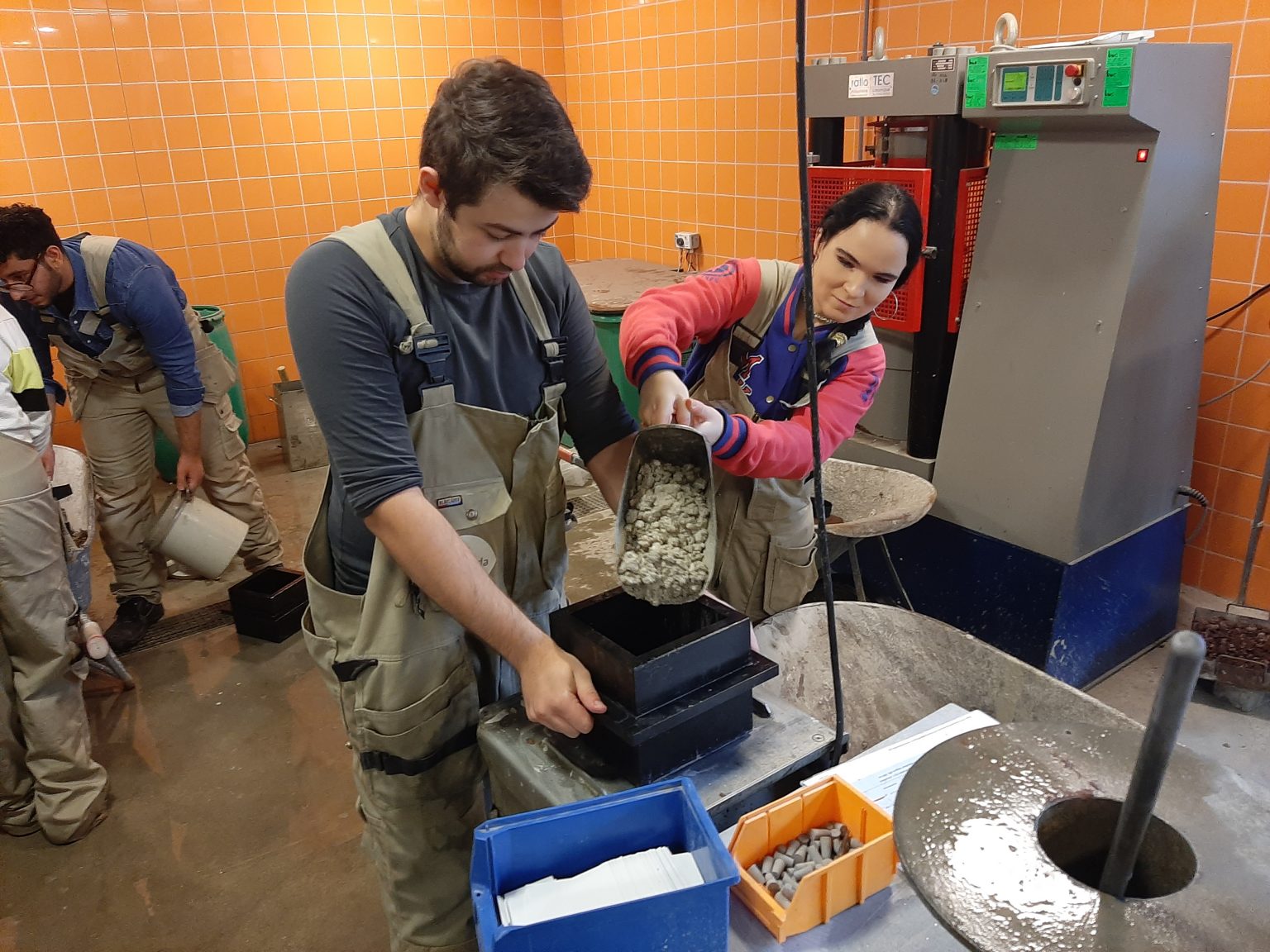Mainly researchers from the Biobased Building research group, Marianna Coelho works in this lab. Marianna talks about their work. “Our goal with the viberscrete project is to get a significant percentage of miscanthus fibers, also called elephant grass, in concrete.
For that, it is essential to go deep into the mix design. With the optimal amount of cement, water, sand, gravel and miscanthus fibers, it is possible to get strong concrete with a high content of natural fibers.
Advantages and disadvantages
In addition to being less polluting to the environment, the addition of natural fibers has other advantages. Namely, the thermal and acoustic properties also increase. Unfortunately, there are also disadvantages to consider. For example, it has low mechanical strength, is sensitive to humid conditions and has the ability to deform. This is why research into the right composition is so badly needed.
Machines
The research is completely set up at the concrete lab at Scalda in Vlissingen. The most important machines are the mixer to produce concrete and the compression testing machine to display the compressive strength. Marianna: “The results already showed the best type of pretreatment to use in the miscanthus fibers. The current step is to improve the composition of the concrete mix.”
Do you have questions about the projects at the concrete lab, have ideas about new projects or want to know more about the facilities? If so, please contact Marianna Coelho.




